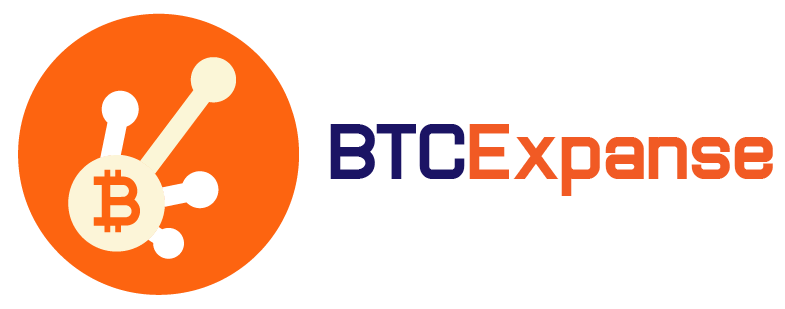Cloud mining is currently being used as an alternative to regular cryptocurrency mining; in which the miner directly uses cryptocurrency mining hardware to mine new crypto.
Cloud mining is a good choice for those people who have little to no technical knowledge of mining hardware, live in countries where crypto mining is considered illegal, and for those don’t want to regularly maintain cryptocurrency mining hardware and occasionally upgrade it.
Cloud mining is a beneficial process, and anyone can start using it with a little investment. However, there are also many scammers waiting to deprive investors of their money by introducing cloud mining scams.
This guide will discuss cloud mining in detail and enlists its benefits and drawbacks as well.
What is Cloud Mining?
Cloud mining works with a user renting a remote mining setup to mine cryptocurrency without physically operating a mining setup. There are lots of cloud mining service providers providing their services in the market.
Remote mining setups are called mining farms, and the users have to participate in cloud mining farms. Cloud mining providers provide various hash rates at different costs which users can buy according to their needs and investment?
At the end of the mining period, the rewards are distributed according to your investment and the borrowed hash rate.
Since cloud mining setups are operated in remote locations, users don’t have to invest in physical mining hardware, maintain it, or worry about electricity costs.
To start cloud mining, users need to find a trustworthy cloud mining service to sign up with, and choose a suitable cloud mining package for the duration they want to mine.
After the advance payment is made, the cloud mining provider will help the user set up there cloud mining account, and the mining process will start right away. There are several payment methods users can choose from, including fiat currencies and crypto.
Most cloud mining setups support the purchasing of up to 1000 gigahashes/ second, which contracts to last for up to a year. On the other hand, there are cloud mining providers who can provide you with cloud mining projects ranging from 6 months to 2 years (24 months).
Bitcoin Mining
The process of Bitcoin mining is very power intensive and requires the use of specialized mining equipment as well. On the other hand, cloud mining allows the user to mine Bitcoin remotely without investing in mining hardware, and without obtaining lots of technical knowledge.
Cloud mining involves the use of one data center, which has a huge mining potential, and shares the hash rate amongst various cloud miners?
Bitcoin mining, whether physical or through cloud mining, is rewarding. However, the ROI (Return On Investment) for Bitcoin mining depends on the market value of Bitcoin and various other factors. Since you’re renting a remote Bitcoin mining setup, factors like hash rate and electricity costs can play a major role in the total ROI of a project.
If you want to set up a physical mining setup, you’ll have to invest in expensive GPUs and mining rigs which might cost you around $10,000 per setup. After setting up your hardware, you’ll have to arrange lots of electricity, and will have to maintain the hardware mining setup as well.
On the other hand, signing up with a cloud mining service can help you avoid heat issues, noise, electricity constraints, and from maintenance costs.
After setting up the account, all you have to do is to collect the rewards in your account and wait for the mining period to end before you’re allowed to cash your rewards.
Just like every other thing related to cryptocurrencies, cloud mining has its risks involved in the process. That’s why you should always do proper research before signing up with such service providers.
How Does Cloud Mining Work?
When it comes to cloud mining, there are two types of cloud mining setups you can choose from.
Hash Power Leasing
After choosing an appropriate cloud mining farm to sign up with, the user/ miner can choose the correct amount of hash power to lease. Cloud mining farms usually make packages for users who might be willing to sign up with them, and users can choose an appropriate package for cloud mining?
Once the package is chosen, the mining process can start right away, and the user doesn’t have to buy any mining hardware or worry about maintaining it. Depending on the hashing power the user chooses in their package, they’ll be able to cash out the rewards after the mining period ends.
Host Mining
Host mining involves an investor/ miner renting an entire mining farm or a portion of it. The investor has to maintain the mining farm and bear any costs related to the mining process. In host mining, you can choose a mining setup located in an area with cheap electricity.
Host mining farms give most of the access and power to the miner hosting that farm. So, the miner can also use the hashing power of their farm to join a mining pool for greater rewards. In the end, the host has full access to the mining rewards generated by the farm they host.
Working Mechanism of Mining Pools
In mining pools, all the participants have to share their hashing power with the rest of the network, and this helps increase the probability of the mining pool getting more blocks of cryptocurrency to mine. To add a new block of cryptocurrency to a blockchain, the mining rigs have to solve tough cryptographic puzzles.
Whenever a new block is added to the blockchain by a mining pool, they’re given rewards in the form of the same cryptocurrency they’ve mined. The rewards are then divided between the participants according to their percentage share in the mining pool.
Mining Rewards
Depending on the cryptocurrency being mined by a mining pool, the difficulty level varies for its miners. Whenever a miner helps the mining pool in solving the difficulty of crypto mining, they get the rewards according to the PPS (Pay Per Share) model.
Some mining pools have certain criteria for their miners, and also impose restrictions on how much reward a single miner can get according to the PPS model. Mining pools can also introduce paying models for their miners.
Before signing up with a mining pool, users are instructed to carefully read their paying model, and sign up only if they’re comfortable with the model they’re providing.
The Need for Cloud Mining
Even though the mining difficulty is constantly rising, many people are still interested in participating in the mining process. That’s what gives rise to the idea of cloud mining.
Miners can choose to run the mining operations remotely by only paying a fee, and there’s no need for them to invest in expensive mining apparatus.
Let’s take a look at the primary reasons behind the introduction of cloud mining.
Computing Power
Cryptocurrencies are made with specific algorithms which gradually increase the mining difficulty to keep the crypto supply under check. This is why more computational power is needed to mine Bitcoin, while rewards per mined block have significantly decreased.
Since the introduction of Bitcoin in 2009, the mining rewards have gone from 50/ block to only 6.25/ block these days.
Moreover, there’s a demand for more computational power to mine Bitcoins. This is how the idea of mining pools was created. These pools allow miners from around the globe to join hands, and increase their combined computational power to mine more blocks, and thus earn more rewards.
Limited Cryptocurrency Supply
We can also not forget the fact that most cryptocurrencies have a maximum market supply cap incorporated into their algorithm. For example, only 21 million Bitcoins can ever be mined, and 19 million of them are already in circulation.
This is why the investment in Bitcoin is increasing with every passing day and is increasing the value of the cryptocurrency. Cloud mining and any related innovations have thus helped individual miners to combine their power, and earn a significant amount of the most valuable cryptocurrency.
High Returns
High return on investment (ROI) is the main reason why prospective miners from around the globe are interested in taking part in the mining process by joining mining pools.
The cloud mining industry is still booming, and big cloud mining companies are always willing to give high returns on investment for their users.
Mining Rigs
When the concept of crypto mining started, users were able to use their average home computers to mine cryptocurrency. As time passed, miners began to compile lots of GPUs in their computers to accelerate the mining process with the help of more hash rates.
GPUs proved as a much more efficient way to mine cryptocurrency since they were able to handle a lot more complex puzzles as compared to an average CPU. With the widespread use of GPUs in the Bitcoin mining industry, solving the SHA-256 algorithm became much more difficult.
Due to the increasing difficulty of the mining process, ASICs (Application Specific Integrated Circuits) were introduced. This made mining specific cryptocurrencies a lot easier for anyone who possessed an ASIC and made GPU mining useless and less effective.
However, since ASICs are specifically created for selected cryptocurrencies, they were very costly, and an average miner could not afford them anymore.
Moreover, this caused a further increase in the hashing power of the Bitcoin network and made things a lot more difficult for miners around the globe. This is when CPU mining effectively died, and the electricity costs for regular CPU or even GPU mining increased significantly, making the process almost useless for miners.
Due to the increased costs of ASIC mining rigs, crypto mining turned into an industry only suitable for major players. However, individual miners adapted rapidly to this change, and the idea of mining pools was introduced. Mining pools allowed every minor to take part in the mining process, and claim the reward for their participation in the network according to their hash rate.
In the end, data centers realized that many people were not able to join the mining process simply because they were not able to invest in ASIC mining rigs or even join large mining pools because of investment constraints.
This is when cloud mining was introduced, and users were given the luxury to choose a flexible mining package to start earning passive income from mining even without investing a penny in a physical mining rig, or bearing the cost of maintaining it in the long run.
This allowed people from third-world countries with electricity issues to join the mining community, and benefit from the rewards that mining has to offer.
Comparison Between Cloud Mining and Hardware Mining
Cloud mining requires the investors to invest money in the remote mining operation, and the mining company takes on all the hassle of maintaining the mining rigs and managing the cost of electricity for their investors. They rent their hashing power to cloud mining subscribers from around the globe, and the rewards are split.
Cloud mining providers have to choose cold areas with low electricity rates, and have to invest in expensive mining equipment to complete a cloud mining setup. They know how to calculate the costs of running a cloud mining setup, and rent out their hash rate to cloud mining users at a specific cost.
On the other hand, miners get a cut from the rewards earned by the cloud mining farm. This is in return for the investment they make at the start of the mining process.
If a miner chooses to do hardware mining, they will have to invest in a mining rig, pay the electricity cost on their own, and maintain the mining rig as well. The miner can then choose to either mine solo, or join a mining pool for increased chances of earning more mining rewards.
A reliable internet connection is needed in hardware mining, and the minor has to pay all the maintenance costs and upgradation costs of their mining rig.
Benefits of Cloud Mining
Let’s take a look at the benefits of cloud mining for cloud miners around the globe.
A Cost-Efficient Process
One of the biggest benefits of cloud mining is that it is very cost-efficient. A user does not have to invest in expensive mining equipment, maintain them, or even pay the electricity costs to complete the mining process.
Cloud mining can be done from a laptop or even a mobile phone, as all the investor has to do is check their mining rewards from time to time.
A huge drawback for hardware miners is that they won’t be able to sell their mining equipment for a reasonable price whenever mining becomes obsolete. Cloud minus does not have to worry about this either.
Moreover, the cloud mining process also frees a cloud miner from heat, noise, and electricity-related concerns in the long run.
Availability of Tech Support
While hardware mining requires the minor to be technically educated, there is no need for technical education in the case of cloud mining. The most difficult part of the cloud mining process is choosing a reliable cloud mining service provider, and signing up with the right package to benefit from the rewards they are distributing.
After the mining cycle completes, cloud miners are provided with their share of rewards automatically by the cloud mining company. The miners do not have to worry about the technical aspects of the mining rig, as everything is automated.
Zero Maintenance Costs
Another big advantage of cloud mining over traditional hardware mining is that there are little to no maintenance costs involved in the whole process. For example, a cloud miner does not have to worry about maintaining an optimal environment for their mining rig to operate.
Cloud mining companies have to maintain the optimal working condition of their mining rings on their own.
They might achieve this by employing chilling towers or physically placing their mining setup in a cold area. This is done to avoid hardware meltdown and is a useful practice in increasing the overall mining rewards.
However, miners might be required to pay a specific maintenance fee upfront when signing up with a cloud mining service provider.
Risks Associated with Cloud Mining
Let’s take a brief look at the risks associated with cloud mining.
Since cloud miners are not required to invest in any type of mining hardware, they are not provided with any amount of power over the mining rigs’ day rent. They can also not sell these mining rigs, as they are completely owned by the cloud mining service provider.
Cloud mining projects are rarely clear about their payouts, or return on investment. Therefore, you have to do the calculations on your own and choose a reliable cloud mining provider.
The cloud mining industry is also full of fraudsters looking to deprive the miners of their money. This includes creating phishing websites or running away with subscription fees without providing any services.






























